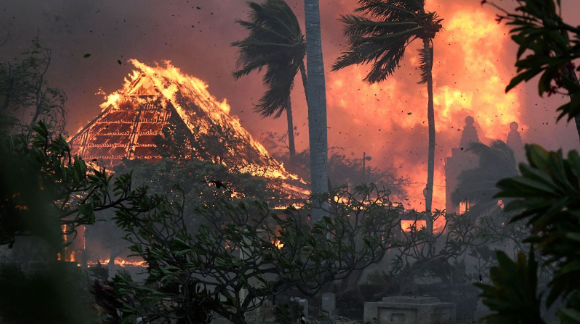On Aug. 8, fires devastated the island of Maui, one of the Hawaiian island chains. The flames scorched up to 5.7 square miles of land. It also claimed the lives of over a hundred people while displacing thousands more, and raged on for a week before dying down. Families that were separated by the fire are still combing the charred ruins of their cities in a desperate attempt to be able to reunite with their loved ones. Despite the search efforts dragging on to a second week, people are not giving up hope.
Many believe that the fire, which is said to have originated from a fallen powerline igniting the area around it, could have been prevented had the Hawaiian government and people heeded numerous warnings. The company in charge of the powerline, Hawaiian Electrical, was told numerous times its systems needed a utility check or it risked starting a fire. The Hawaiian government was aware of the dangers in 2018 but had taken no action to prevent such matters. For the past decade, the Hawaiians had adopted a sense of ease. They believed that almost nothing would be able to.
Recently, it has come to light that a myriad of factors were responsible for the fire, one being negligence by the Hawaiian government. Around 5 years ago, a similar fire nearly took Lahaina, one of the most populated cities on the island. This time the city wasn’t so lucky.
“It’s all gone,” Richard Bissen, Mayor of Maui, said. “Everything there is destroyed.”
Eerily enough, both fire storms were ignited by the exact same conditions. Maui was in the midst of a drought and hurricane-fueled winds when they happened. Yet when further investigations were launched into the heart of the issue, it was uncovered that human carelessness had played the largest part in the devastation of the fire.
“I think this event should serve as a warning for future years for their government.”,
Russel Jin (10), an SIS student, said, “ They should learn from the mistakes of the Hawaiian government and understand that no matter how good a natural disaster defense system is, there will always be a human error involved. Confidence and most importantly vigilance and guard should not be let down, or risk losing unnecessary human lives”, Maybe the government should take his advice.
Another factor was overconfidence in the reliability of the natural disaster prevention and defense systems to keep the people safe. The system has up until now been quite reliable, surviving against typhoons and mitigating damage from floods and hurricanes. It was not, however, equipped to deal with fires. This seems to have planted a sense of overconfidence in the hearts and minds of the Hawaiian people that their system would protect them no matter what, a view that was catastrophically shattered after many were unable to escape the flames.
“The government could have been more cautious, heeding the electrical system failure warnings, which could potentially have prevented the loss of so many lives,” Chong Min (11), an SIS student, said.
The environmental damages of the fires are also a big issue. Even now, the damage from the fires is still evident as residents come back to rows and rows of burned-out houses and trees turned to ash. Hawaii’s coastline, which is famous for its aesthetic, is now covered in ash. Many worry about the long-term effects of the fires. To make matters worse, the government didn’t take the necessary measures to warn their people of the impending disaster.
“I feel wildfires are common in Hawaii. The increasing climate and the possibility of droughts. As for the long-term effects, many people would have lost their jobs, homes, etc.,” Allyson Lee, an AP Environmental Science teacher commented. “The residents weren’t notified of the situation, they were told that the fires were contained when it was actually not.”


